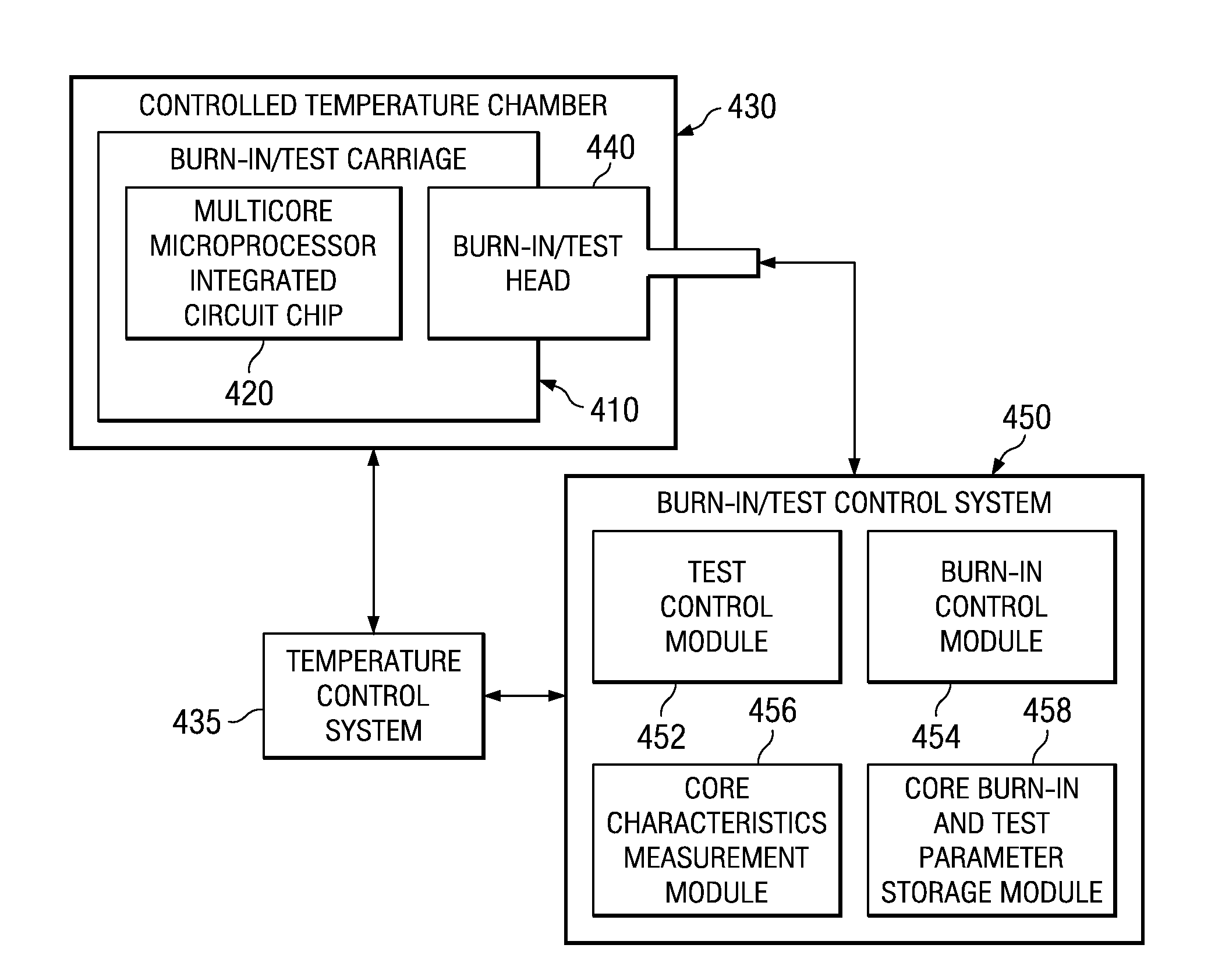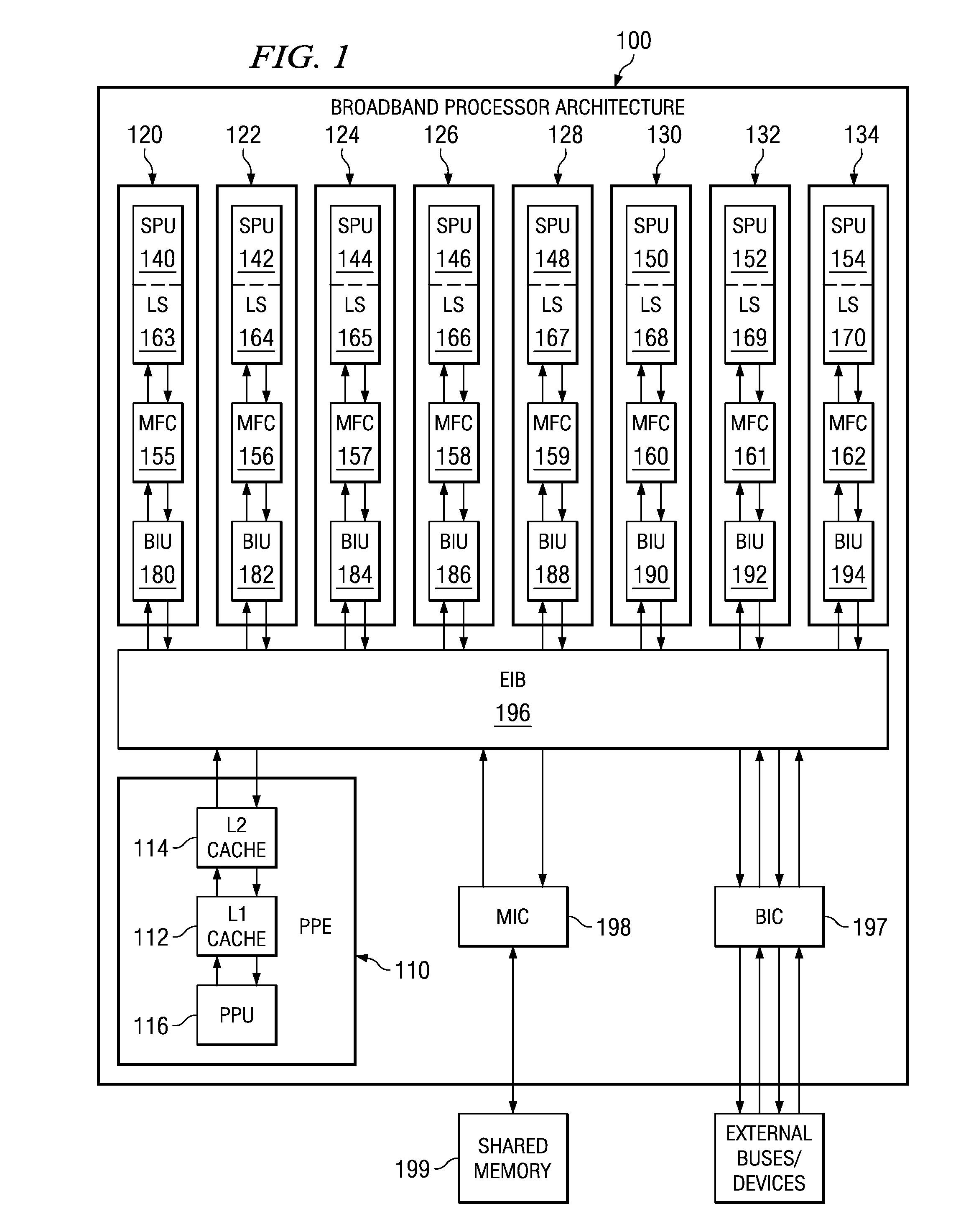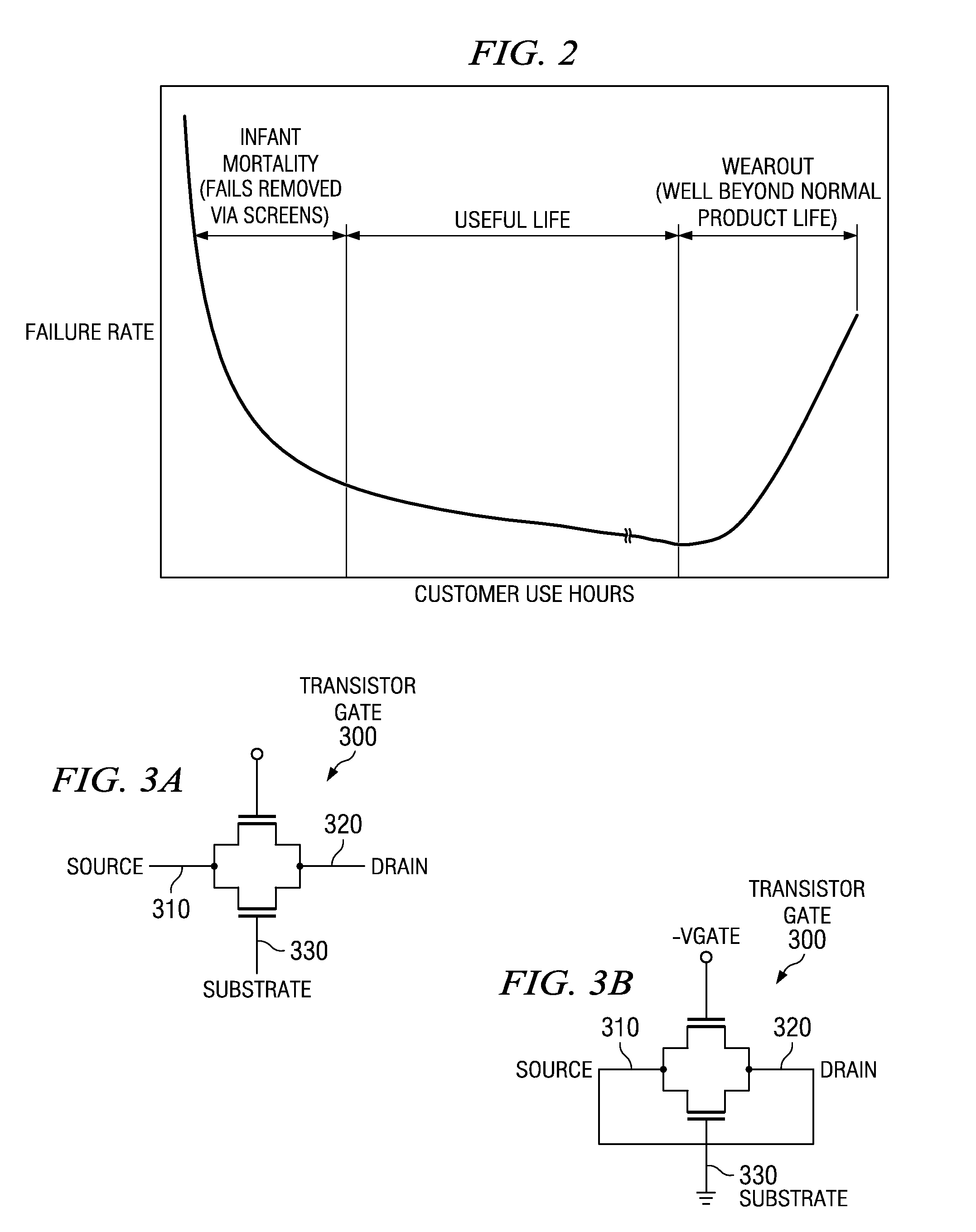Apparatus and method for customized burn-in of cores on a multicore microprocessor integrated circuit chip
a multi-core microprocessor integrated circuit and burn-in method technology, applied in the direction of electrical testing, measurement devices, instruments, etc., can solve the problems of continuous increase, wearout period, and the greatest failure rate of integrated circuit devices at the beginning and end of the average life cycle, so as to reduce the cost of the chip, improve burn-in yield, and achieve uniform power and performance
- Summary
- Abstract
- Description
- Claims
- Application Information
AI Technical Summary
Benefits of technology
Problems solved by technology
Method used
Image
Examples
Embodiment Construction
[0033]The illustrative embodiments provide an apparatus and method for performing customized burn-in of cores in a multicore integrated circuit chip. The mechanisms of the illustrative embodiments may be applied to any multicore integrated circuit chip and are not limited to any particular configuration. For purposes of illustration, however, the following description of the illustrative embodiments will make reference to the Cell Broadband Engine (CBE), also known as the Broadband Processor Architecture, available from International Business Machines, Inc., as an example of a multicore microprocessor that may be provided on an integrated circuit chip and stressed using the customized burn-in process of the illustrative embodiments. While the CBE will be used for illustrative purposes, this is not to state or imply any limitation with regard to the types of multicore integrated circuit chips in which the illustrative embodiments may be implemented or with which the illustrative embo...
PUM
 Login to View More
Login to View More Abstract
Description
Claims
Application Information
 Login to View More
Login to View More - R&D
- Intellectual Property
- Life Sciences
- Materials
- Tech Scout
- Unparalleled Data Quality
- Higher Quality Content
- 60% Fewer Hallucinations
Browse by: Latest US Patents, China's latest patents, Technical Efficacy Thesaurus, Application Domain, Technology Topic, Popular Technical Reports.
© 2025 PatSnap. All rights reserved.Legal|Privacy policy|Modern Slavery Act Transparency Statement|Sitemap|About US| Contact US: help@patsnap.com



